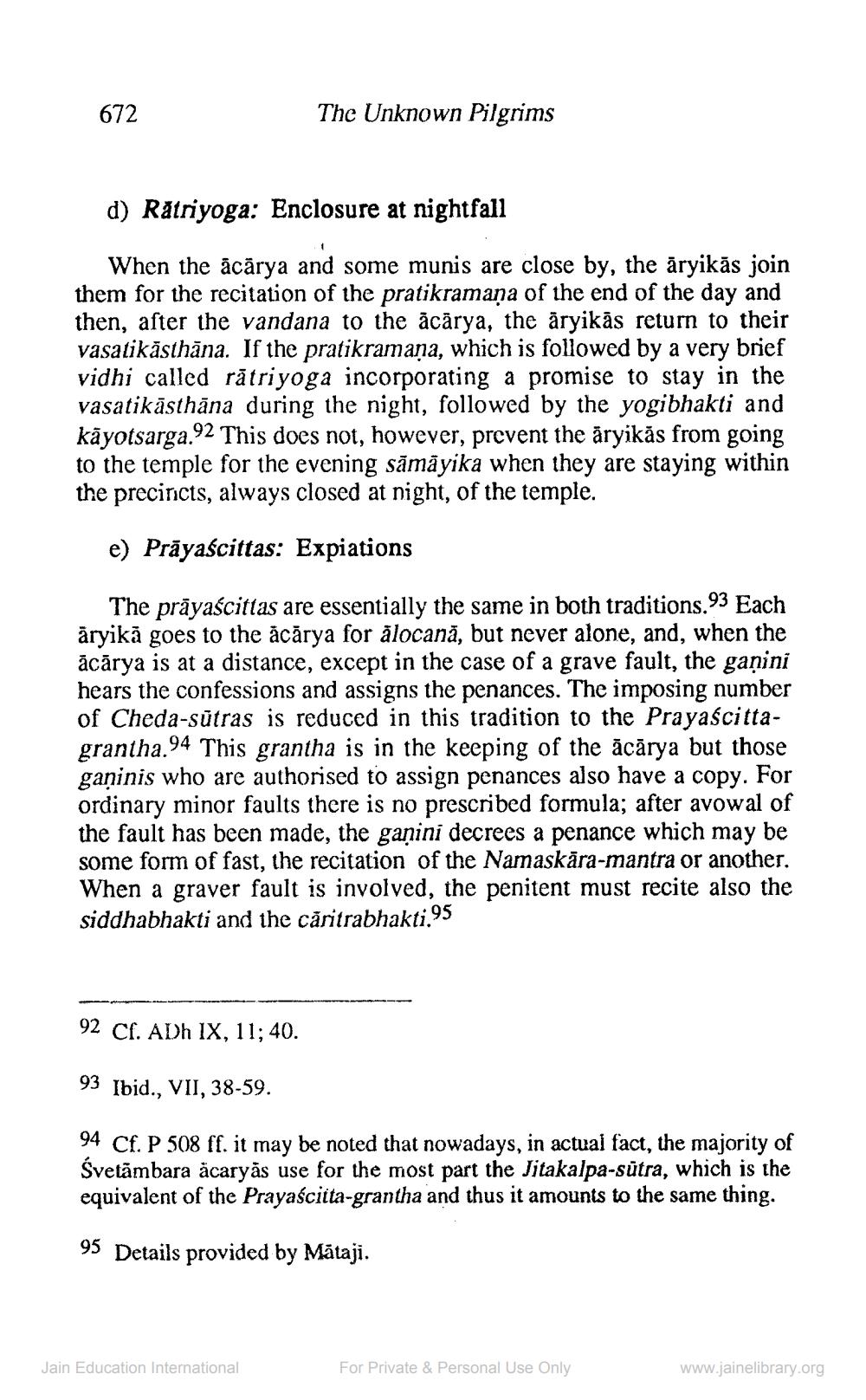________________
672
The Unknown Pilgrims
d) Ratriyoga: Enclosure at nightfall
When the ācārya and some munis are close by, the āryikās join them for the recitation of the pratikramana of the end of the day and then, after the vandana to the acārya, the āryikās return to their vasatikāsthāna. If the pratikramana, which is followed by a very brief vidhi called rātriyoga incorporating a promise to stay in the vasatikāsthāna during the night, followed by the yogibhakti and kāyotsarga.92 This does not, however, prevent the äryikās from going to the temple for the evening sāmāyika when they are staying within the precincts, always closed at night, of the temple.
e) Prāyaścittas: Expiations
The prāyaścittas are essentially the same in both traditions. 93 Each āryikā goes to the acārya for alocană, but never alone, and, when the ācārya is at a distance, except in the case of a grave fault, the gamini hears the confessions and assigns the penances. The imposing number of Cheda-sūtras is reduced in this tradition to the Prayascittagrantha.94 This grantha is in the keeping of the ācārya but those ganinis who are authorised to assign penances also have a copy. For ordinary minor faults there is no prescribed formula; after avowal of the fault has been made, the ganini decrees a penance which may be some form of fast, the recitation of the Namaskāra-mantra or another. When a graver fault is involved, the penitent must recite also the siddhabhakti and the căritrabhakti.95
92 Cf. ADh IX, 11;40.
93 Ibid., VII, 38-59.
94 Cf. P 508 ff. it may be noted that nowadays, in actual fact, the majority of Svetambara äcaryās use for the most part the Jitakalpa-sutra, which is the equivalent of the Prayaściita-grantha and thus it amounts to the same thing.
95 Details provided by Mātaji.
Jain Education International
For Private & Personal Use Only
www.jainelibrary.org




